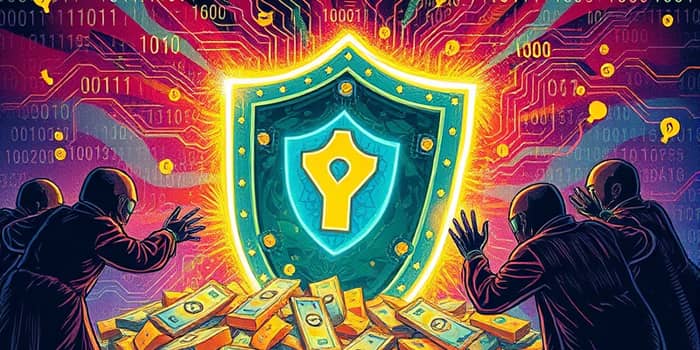
In today’s interconnected world, our financial lives unfold in digital spaces where convenience and risk coexist. From mobile banking apps to cloud-based trading platforms, every transaction travels through networks teeming with threats.
As cybercriminals grow bolder, safeguarding your assets requires vigilance, innovation, and collaboration. This article explores the evolving landscape of financial cybersecurity and offers actionable strategies to defend your digital money.
The numbers speak for themselves: the global cybersecurity market reached $74.3 billion in 2022, and is projected to soar to $282 billion by 2032, reflecting investments driven by escalating threats.
Financial institutions endured 566 breaches in 2022 with 254 million records leaked worldwide, at an average cost of nearly $6 million per incident. Consumers and executives alike recognize this crisis: 98% of users worry about cyberattacks, and 57% of banking leaders list security as their top priority.
Financial services remain a prime target as attackers harness advanced tools. AI-powered phishing and social engineering campaigns adapt in real time, while deepfakes and adaptive malware challenge conventional defenses.
Cloud platforms and APIs have become hotbeds for intrusions, with bot attacks rising 69% year-over-year. Supply chain exploits further expand the attack surface, as vendors and partners are leveraged to reach prized networks.
Financial firms navigate a complex web of compliance mandates—DORA, PCI DSS, GDPR and local breach notification laws impose rigorous standards. Noncompliance can lead to heavy fines and reputational damage.
A global skills shortage exacerbates risk, as institutions struggle to recruit experts capable of managing AI-driven threats. Geopolitical tensions inject additional uncertainty, with state-sponsored actors targeting cross-border transactions.
Meanwhile, 84% of banks view cloud migration as essential, yet misconfigurations and inadequate security controls leave gaps. Bridging the skills divide and strengthening governance are critical tasks for every organization.
Proactive, intelligence-driven security architectures are key. Real-time monitoring and AI-enabled detection tools can identify anomalies within milliseconds, reducing dwell time and potential damage.
Zero Trust frameworks, which assume no implicit trust for any user or device, enforce stringent access controls and continuous verification, minimizing lateral movement by attackers.
Individual account holders can take simple yet effective steps to bolster security. Digital hygiene, much like personal hygiene, requires discipline and routine.
From password practices to monitoring, every layer adds resilience against fraud and theft.
Cybercrime’s trajectory remains steep, with costs forecast to hit $23 trillion by 2027. Yet innovation offers new hope: quantum-safe encryption, decentralized identity solutions, and blockchain-based audit trails promise stronger integrity and transparency.
Regulators and private firms are moving toward unified frameworks, automating compliance through AI-driven policy engines and enhancing information sharing to preempt threats.
Continuous education and cross-sector collaboration will shape a resilient ecosystem, able to adapt to evolving attack strategies and emerging technologies.
As digital money becomes the lifeblood of global economies, cybersecurity is not a siloed responsibility but a collective mission. Institutions, regulators, and consumers must unite to build defenses that are as dynamic as the threats they face.
By investing in advanced technologies, nurturing skilled professionals, and embracing robust best practices, we can transform a landscape of risk into one of resilience—ensuring our digital wealth remains safe for generations to come.
References













